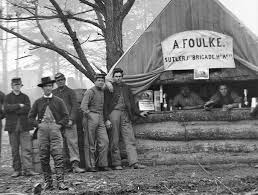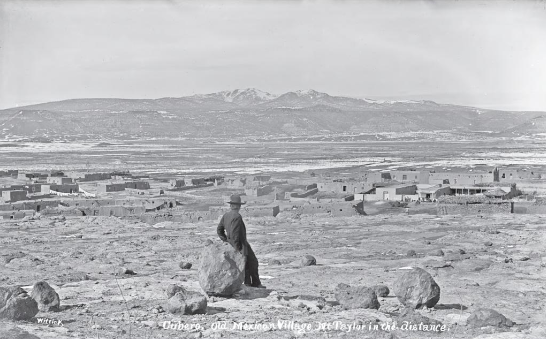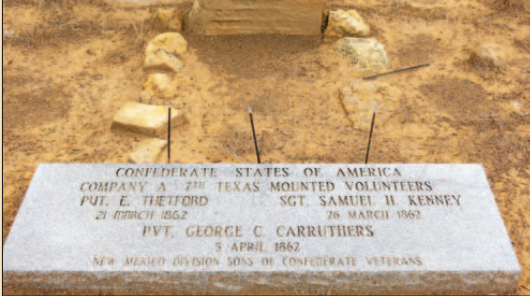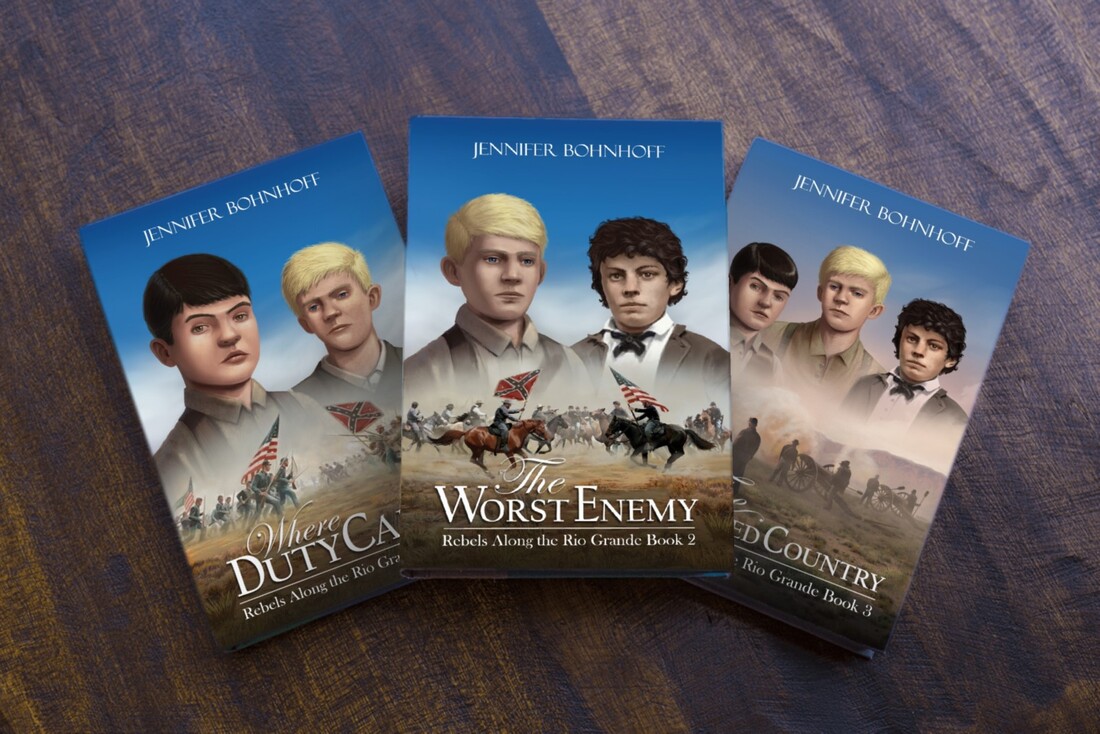At the time of the Civil War, Cubero was a small farming community.Cubero and nearby San Fidel provided hay for the horses stabled at Fort Wingate. It also housed a depot that the Army kept there to keep its soldiers supplied during its intermittent campaigns against the Navajo. The depot, and the trail to Fort Wingate, were guarded by 45 soldiers who were Volunteers in the New Mexico militia.
 Sutlers sold extra food and supplies to soldiers. Their stores were often in tents so they could move with the army.
Sutlers sold extra food and supplies to soldiers. Their stores were often in tents so they could move with the army. In 1858, he became co-owner of a sutler’s store, a store that provided goods to soldiers, at Camp Floyd. He also owned the post sutleries at Cubero and Fort Fauntleroy, which changed its name to Lyon, and finally Wingate after Colonel Thomas Turner Fauntleroy left the Union Army to assume a position as brigadier general in the Provisional Army of Virginia. Kavanaugh owned and raced fine horses and served in the territorial legislature. His wife (who may have been common-law), Refugio Aguilar stayed on Kavanaugh’s ranch near Cubero. They had at least 2, and possibly 5 children.
 Bill Davidson
Bill Davidson Bill Davidson, a soldier in Sibley’s Army later wrote that, immediately after the battle of Valverde, General Canby had sent a courier to Cubero warning them of the Confederate approach, but the Indians had killed the courier. Whether or not this is true, Aragon was caught completely off guard, and quickly surrendered. the Battle of Cubero was won without a single shot being fired: four Confederates had managed to overwhelm a 45 man garrison with words alone.
Gillespie then rode to Albuquerque, where he got Captain A. S. Thurmond and Company A of the 3rd Texas Mounted Volunteers to return with him to Cubero to retrieve the captured supplies. They were able to bring between 20 and 25 wagon-loads of military supplies including 60 guns and 3,000 rounds of ammunition back to Albuquerque. Some of the Confederate soldiers who arrived at Cubero were sick and ended up staying at the abandoned post, where they lived off supplies from Kavenaugh’s store. Three of those soldiers died, probably of pneumonia, and are buried in Cubero’s cemetery.
After the war, Dr. Kavanaugh went south to Mexico, where he and Showalter opened a bar in Mazatlan. Showalter was shot and killed in a bar fight in February 1866. Some records state that Kavanaugh died in that same fight, while others report that he died of alcoholism and tuberculosis. He was 33 years old when he was buried in the U.S. National Cemetery in Mexico City.




